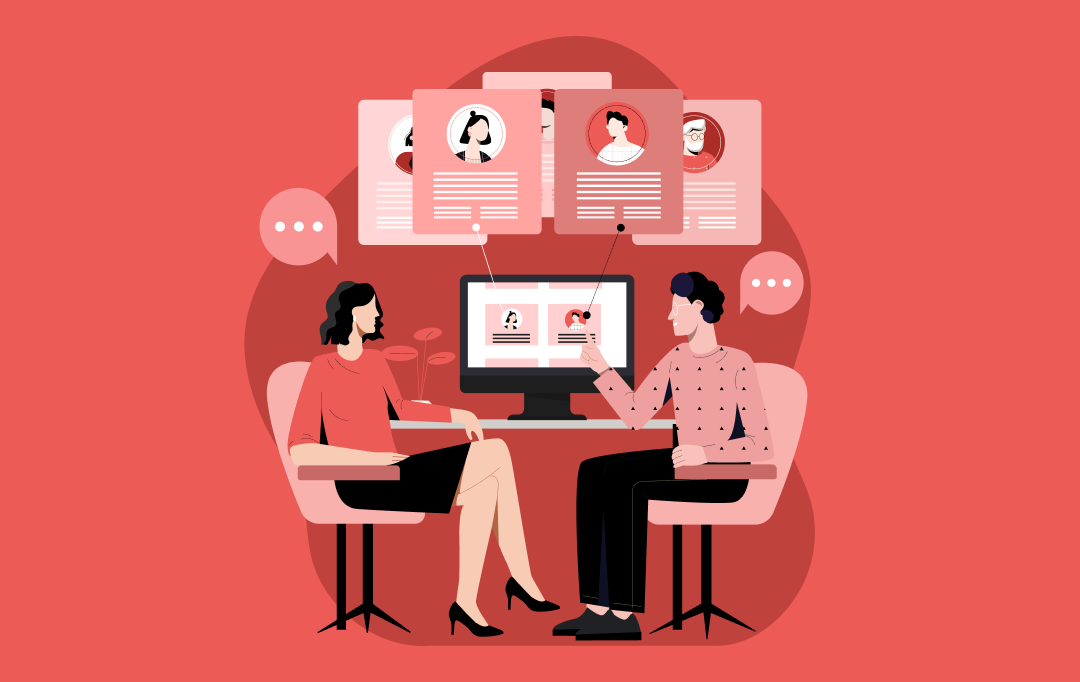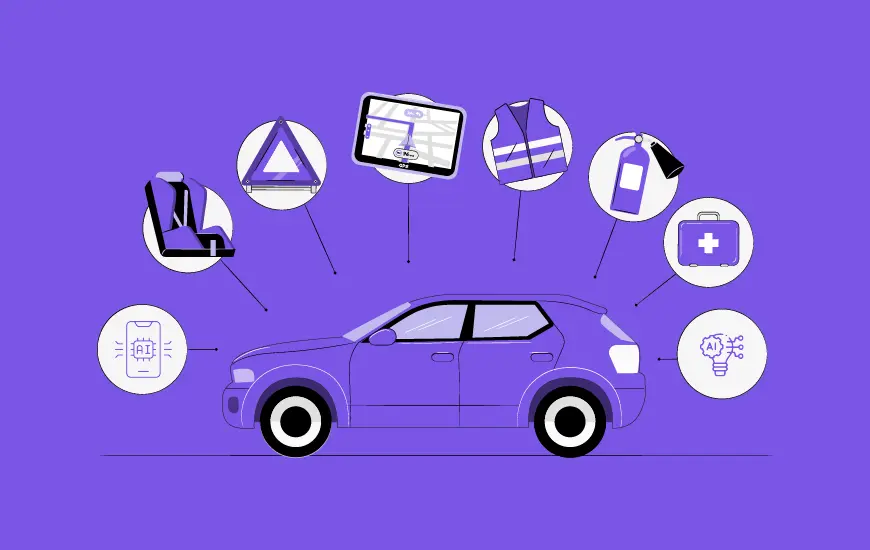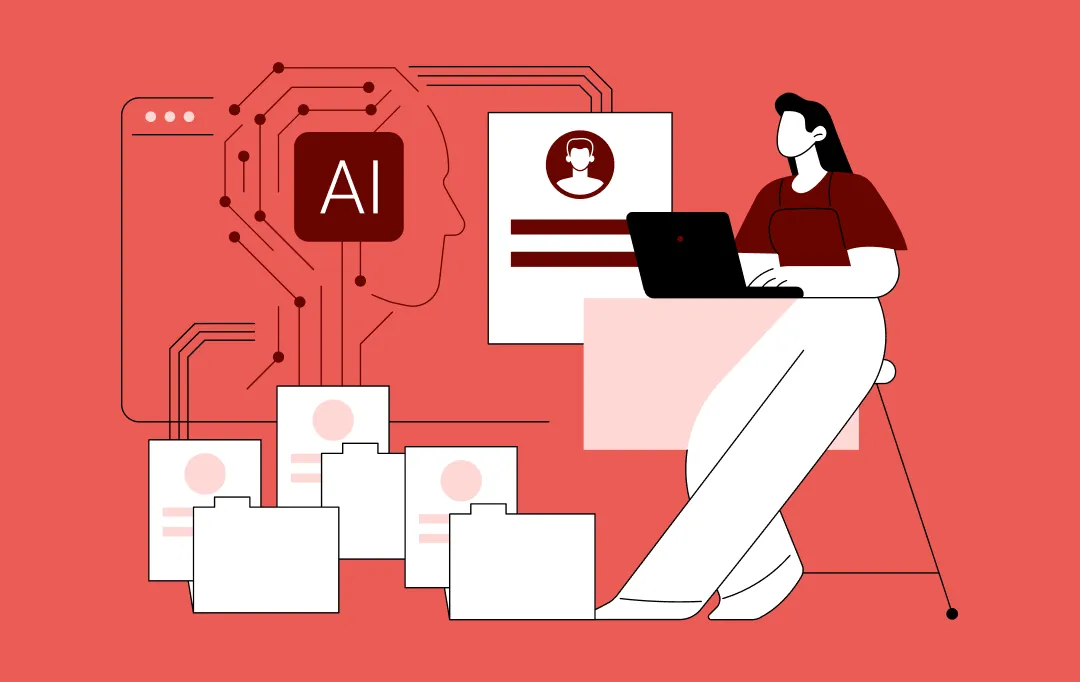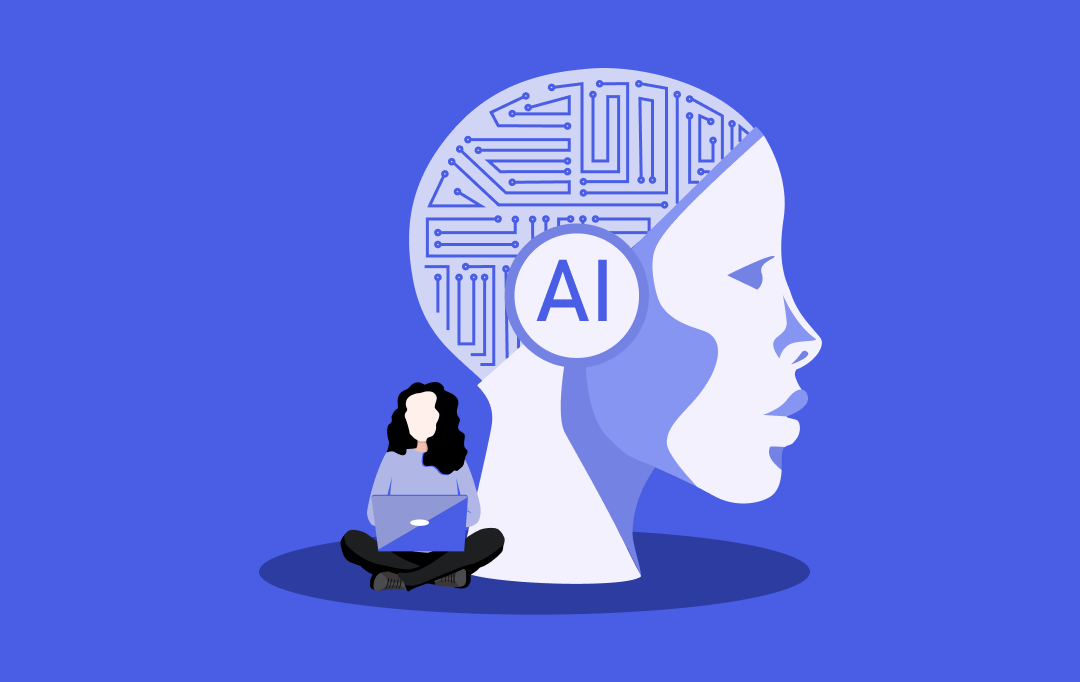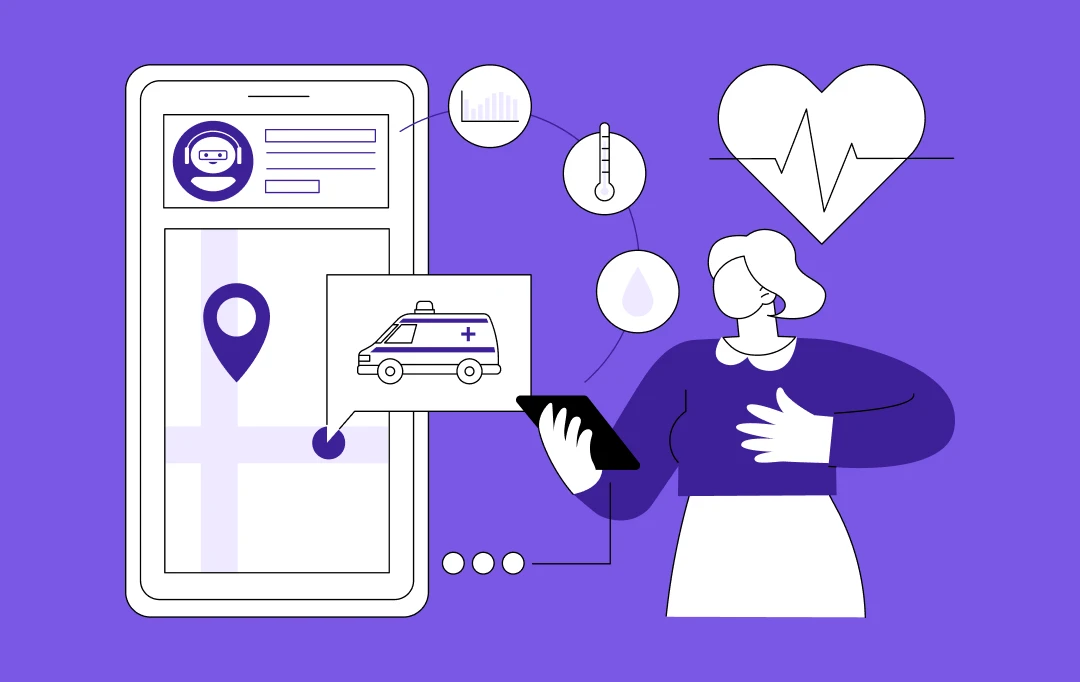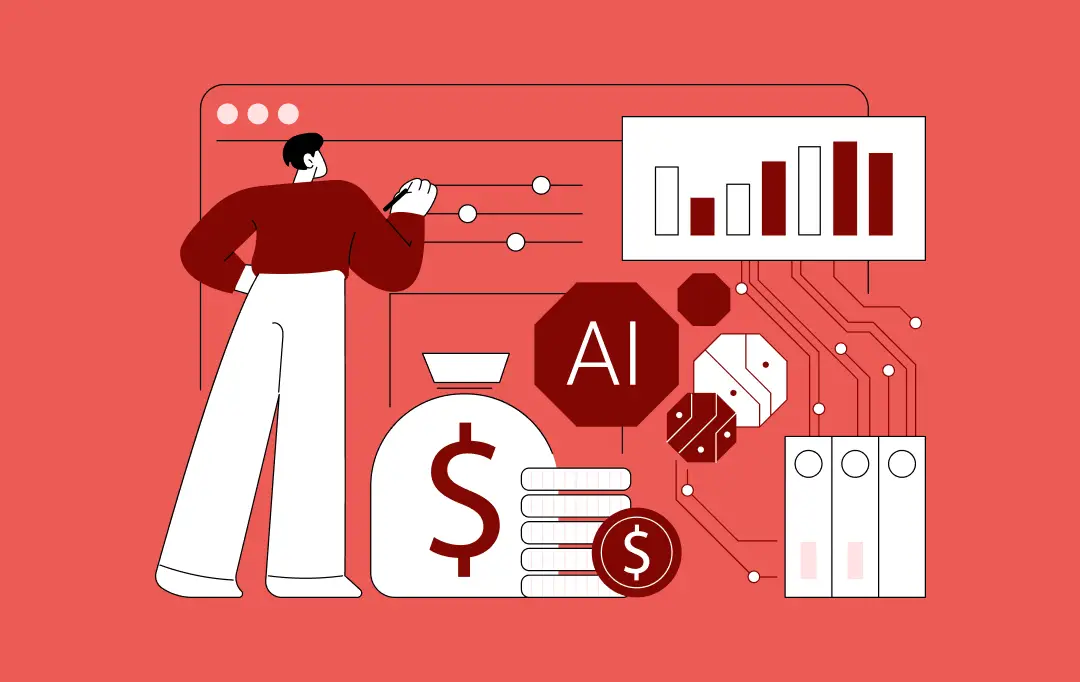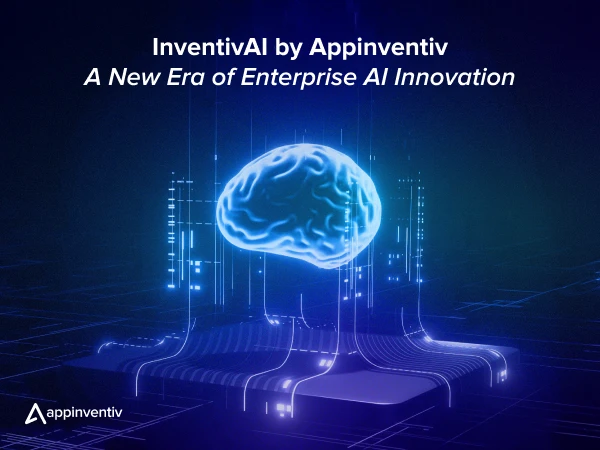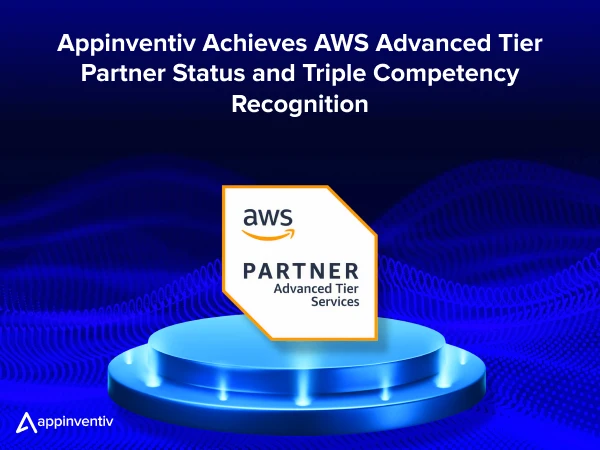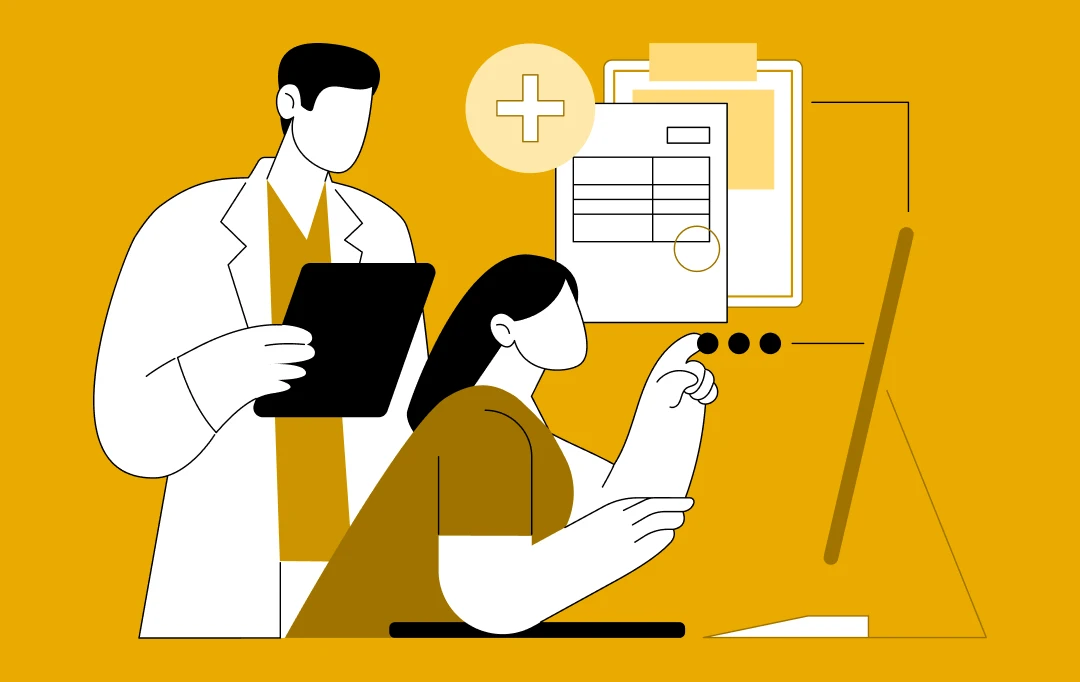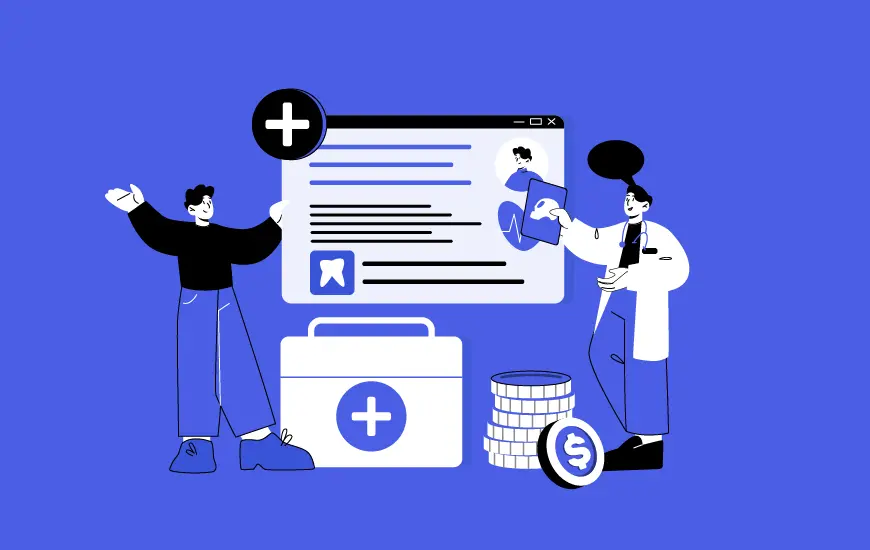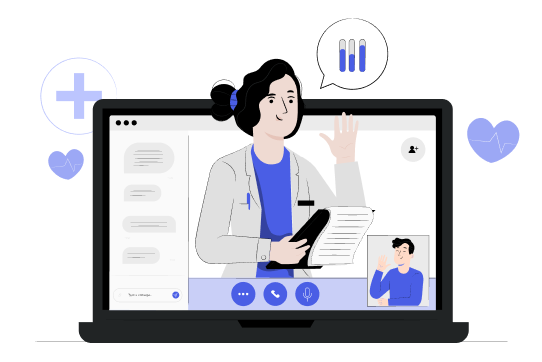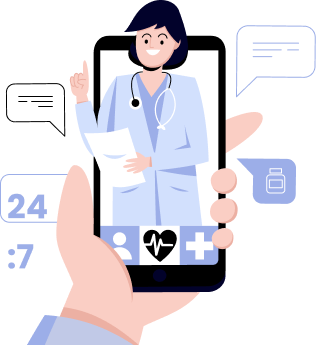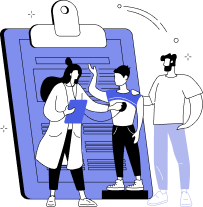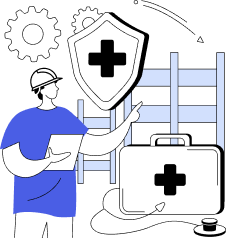- What is an EHR system in Healthcare?
- EHR vs. EMR: Key Differences in Software Development
- An Overview of Different Types of EHR Systems
- 1. Physician-Hosted
- 2. Remotely-Hosted
- The Benefits of EHR System For Primary Stakeholders
- EHR Software Development Benefits for Businesses
- EHR System Development Benefits for Hospitals
- EHR Software Development Benefits for Patients
- The Must-Have Features of EHR Software
- 1. Document Management
- 2. Patients Details
- 3. Prescription Management
- 4. Data Access Control
- 5. Appointment Scheduling
- 6. Reporting
- 7. Labs Integration
- 8. Invoicing
- 9. Patient Portal
- 10. Mobile Access
- 11. Voice Recognition & AI Integration
- 12. Clinical Decision Support (CDS)
- The Tech-Stack and Team Required for EHR Development
- How to Create an EHR Software - A Step-by-Step Process
- Validation of Idea
- EHR Prototype
- Intuitive UI/UX Design
- Robust Software Development
- Rigorous Testing
- Launch and Maintenance
- Key Considerations for Custom EHR Software Development
- Getting the EHR Compliance and Certifications Ready
- Work on the Mobile Version of the EHR
- Data Migration
- Track the EHR System Performance
- Enhancing UX and Workflow Optimization
- Implementing Robust Security Measures
- EHR Software Development Cost
- Common Roadblocks in EHR Software Development and Their Solutions
- Regulatory Compliance
- Interoperability
- Data Security
- User Adoption and Training
- How can Appinventiv Help With Your EHR Project?
- FAQs
- Q. How to build an EHR system?
- Q. How much does EHR software development cost?
- Q. What are the things that I should keep into consideration when building an EHR?
- Q. How long does it take to implement an EHR system?
- Q. What are some of the top examples of EHR software?
- Q. How is AI transforming enterprise EHR systems in 2025 and beyond?
- Q. How can generative AI enhance clinical documentation within EHRs?
Key takeaways:
- Building a robust EHR system involves striking a balance between powerful features, such as lab connections, clinical decision tools, and intelligent automation, while adhering to stringent regulations like HIPAA, GDPR, and HL7.
- The total price for creating an EHR system depends on what features you include. A basic setup might cost anywhere from $40,000 to $300,000, but adding sophisticated tools like predictive analytics, connection modules, and automation can drive that number much higher.
- Getting different systems to work together remains one of the toughest parts of EHR rollouts.
- Without smart planning for moving data and integrating with existing hospital systems, healthcare organizations face delays, additional costs, and potential data loss when switching over.
Did you know that hospitals in the U.S. lose an estimated $12 billion annually due to inefficiencies in paper-based medical records? (Source: Medscape). According to a report by the University of Chicago, manual documentation, misplaced records, and administrative bottlenecks significantly contribute to revenue loss and operational slowdowns.
Recognizing these challenges, the U.S. government introduced the HITECH Act, which established the Medicare and Medicaid EHR Incentive Programs to encourage the adoption of certified EHR systems. This initiative has played a crucial role in accelerating digital transformation in healthcare.
The transition to Electronic Health Records (EHR) has revolutionized the industry, eliminating paperwork inefficiencies, reducing medical errors, and improving overall patient care. More than just a digital filing system, modern EHR software integrates AI, data analytics, and interoperability to create a seamless healthcare ecosystem. Modern EHR systems must include telehealth EHR integration features to support the growing demand for virtual healthcare delivery and remote patient consultations.
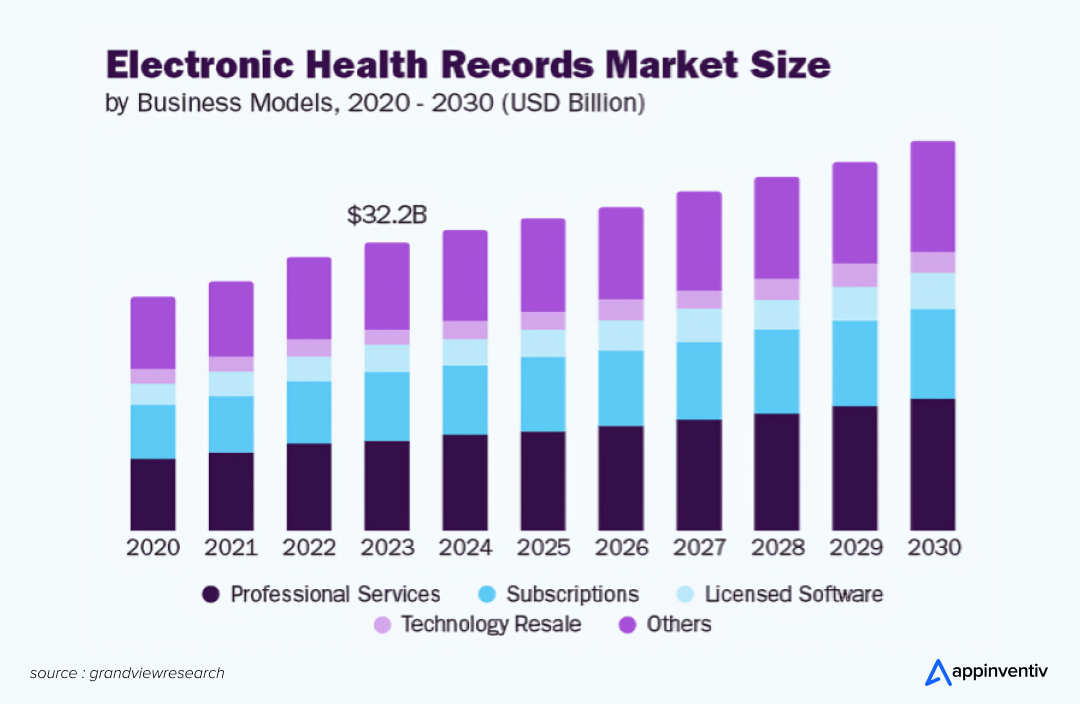
The global electronic health records market is expected to reach $43.36 billion by 2030, fueled by the growing digital transformation in healthcare (Source: Grand View Research). This includes the increasing demand for seamless data exchange, government incentives for EHR adoption, and the need for efficient patient record management. Moreover, innovations in AI and cloud technology are enhancing EHR functionality, making healthcare data more accessible and improving clinical decision-making.
In the US, the HITECH Act established the Medicare and Medicaid EHR Incentive Programs to incentivize healthcare providers to adopt and use certified EHR technology.
Whether you’re a healthcare provider looking to develop a custom EHR system or a startup exploring EHR software systems, understanding the development process, must-have features, regulatory compliance, and cost considerations is essential.
In this guide, we’ll walk you through everything you need to know about EHR software development, covering its key benefits, must-have features, implementation challenges, and cost considerations. As we move ahead, we will explore the types of EHR systems, how they work, the development process, and the financial investment required. Let’s move ahead!
Let’s create your custom EHR!
What is an EHR system in Healthcare?
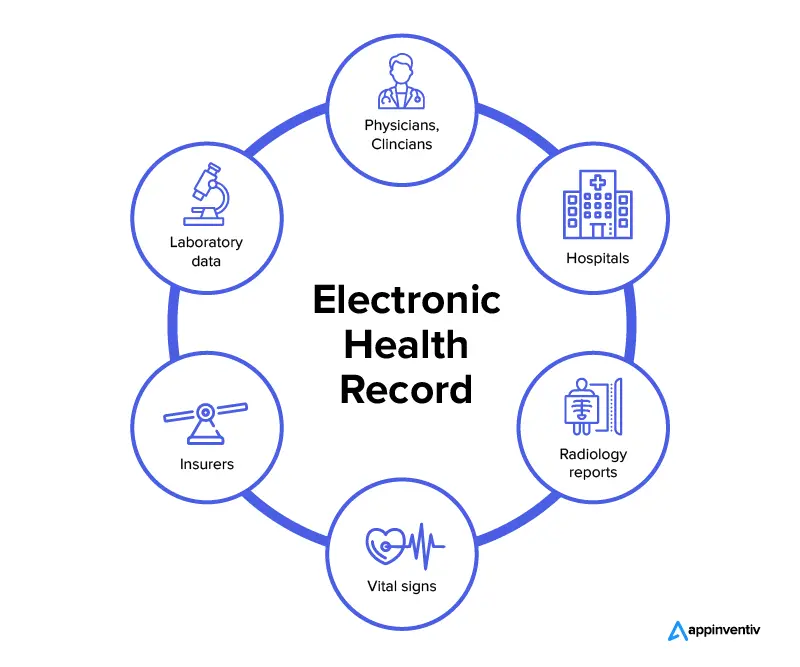
An Electronic Health Record (EHR) system is a digital solution designed to store, manage, and share patient health information securely across healthcare providers. Unlike traditional paper-based records, EHRs offer real-time access to comprehensive patient data, enabling doctors, nurses, and specialists to make informed decisions quickly and accurately.
A well-developed EHR system includes:
- Patient demographics & medical history
- Lab test results & diagnostic reports
- Vital signs, allergies & immunization records
- Medications & treatment plans
- Progress notes & care coordination tools
- Insurance, billing, & claims management
While Electronic Medical Records (EMRs) are often confused with EHRs, there is a key difference. EMRs are limited to a single healthcare facility, storing patient data only within a specific clinic or hospital. In contrast, EHRs are designed for seamless data exchange, allowing different providers—hospitals, laboratories, and specialists, to access and update patient records as needed.
EHRs are crucial in modernizing healthcare, improving efficiency, reducing medical errors, and enhancing patient outcomes by enabling interoperability, data-driven insights, and regulatory compliance.
Let’s check out the table below to better understand the key differences:
EHR vs. EMR: Key Differences in Software Development
When asked, “Are EHR and EMR the same thing?”, the answer lies in their fundamental differences. Below is a comparison table highlighting the key distinctions between EHR (Electronic Health Record) and EMR (Electronic Medical Record) software, focusing on their scope, functionality, and data-sharing capabilities.
| Feature | EHR (Electronic Health Record) | EMR (Electronic Medical Record) |
|---|---|---|
| Definition | A digital version of a patient’s complete health record accessible by multiple healthcare providers. | A digital record of a patient’s medical history used primarily by a single healthcare provider. |
| Scope | Covers all aspects of a patient’s health, shared across various healthcare settings and providers. | Primarily focused on the medical history of a patient within a single practice or organization. |
| Interoperability | Highly interoperable, allowing patient data to be shared across different healthcare systems and providers. | Limited interoperability, typically confined to the facility where it was created. |
| Data Sharing | Facilitates the exchange of patient data between multiple healthcare providers and facilities. | Data sharing is restricted, generally limited to the healthcare organization where the record was created. |
| Purpose | Offers a comprehensive overview of a patient’s health across various healthcare environments. | Primarily used to track and manage patient care within a specific provider or practice. |
| Functionality | Includes a wide range of data, such as medical history, lab results, medications, immunizations, and more. | Focuses on diagnoses, treatment plans, and notes related to patient care within a single practice. |
| Patient Access | Often allows patients to access their health information through online portals. | Patient access to records is typically limited or unavailable. |
[Also Read: EMR Vs EHR Development – What Should you Choose for your Healthcare Business?]
An Overview of Different Types of EHR Systems
In the healthcare space, there are primarily two types of electronic health record systems, both of which are vital for answering how to build an EHR system.
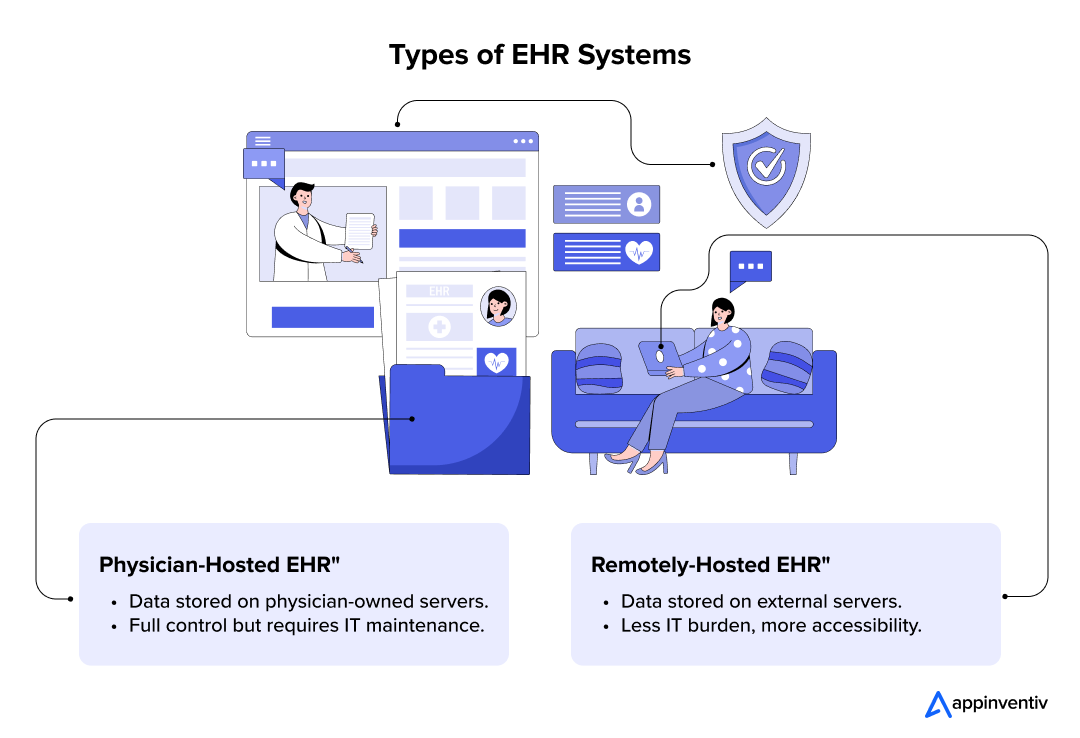
1. Physician-Hosted
This is the EHR type, where the data is hosted on the physician’s servers. In this category, the physician is responsible for buying and maintaining the hardware and software.
2. Remotely-Hosted
Under these EHRs, the server lies outside the physician’s office. This means they are not responsible for storing and managing patient data. The benefit of this EHR type is that the medical practitioner only focuses on collecting information and not managing the IT system.
This model is further divided into:
Dedicated Remote EHR: Hosted by an independent data center, this option provides greater flexibility for customization while outsourcing server management and maintenance.
Cloud-Based EHR: The most scalable and cost-effective solution, offering real-time access to patient data from any location. It enhances interoperability, reduces IT overhead, and ensures compliance with regulations like HIPAA.
Subsidized EHR: Managed by a third-party entity, such as a hospital or government agency, this system helps smaller clinics by covering a portion of the costs, making EHR adoption more affordable.
After looking into the different types of EHR systems available for businesses, let’s move ahead and check out the benefits of adopting EHR software.
The Benefits of EHR System For Primary Stakeholders
Now that you have some familiarity with the concept of EHR development, let us look into the advantages it offers to the three key stakeholders – businesses, hospitals, and patients.
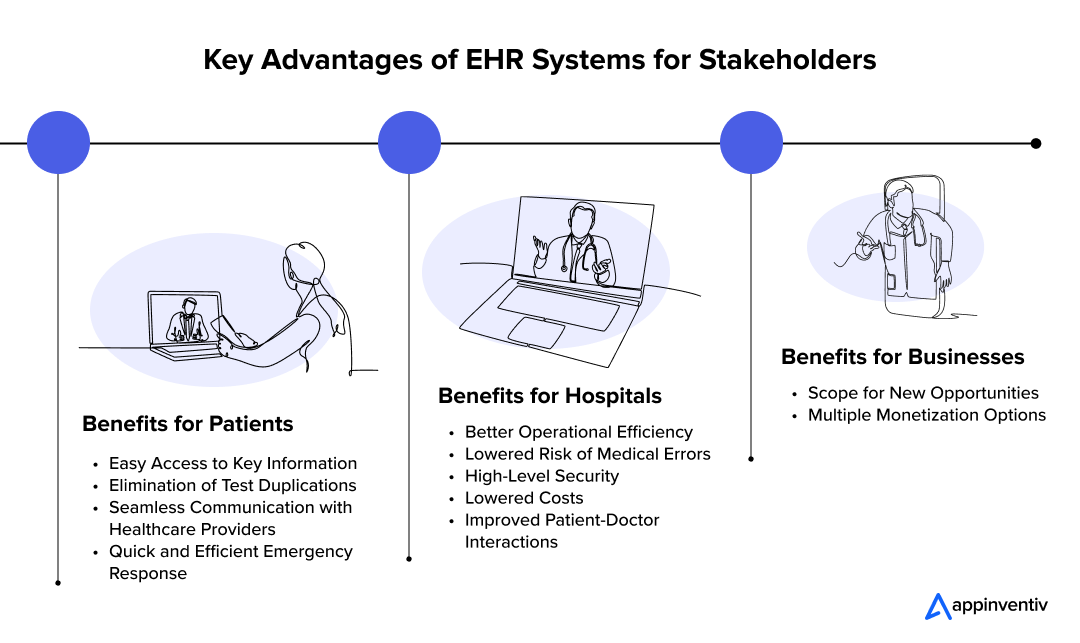
EHR Software Development Benefits for Businesses
EHR software is essential for businesses in the healthcare sector, enabling efficient management of patient records and compliance with industry standards. Here are some of the key advantages of EHR software development for businesses.
Scope for New Opportunities
The EHR market does not work in a ‘one size fits all’ mode. Every healthcare organization across regions and sizes has different EHR software requirements. This means there is always a scope for innovation regarding new business models.
Multiple Monetization Options
Like any other software, EHRs also come with different monetization models ranging from subscription to free software with paid features and pay-per-use. This wide range of monetization options makes investing in EHR system development extremely profitable.
EHR System Development Benefits for Hospitals
EHR systems play a crucial role in modern hospitals by digitizing patient records and centralizing healthcare data. They enhance accessibility, streamline workflows, and support better clinical decision-making, ultimately improving hospital operations. Here are some of the top benefits of EHR systems for hospitals.
Better Operational Efficiency
No matter which types of EHR systems you choose, they all come with the benefit of eliminating the need to manage paperwork like bills and reports. Every patient’s information can be found in the system within seconds. This level of digitalization that EHR promises also makes it easy for doctors to receive data from the lab, prescribe medicine, and track patients’ medical history.
Lowered Risk of Medical Errors
Electronic health record software comes with detailed patient information – data analytics-powered medical insights that inform healthcare providers of incorrect dosages, adverse reactions, and the possible result of drug interactions. The outcome lies in lowering the risk of malpractice and medical issues.
High Level of Security
Every well-planned EHR system design comprises multiple security measures like automation of session termination, digital signatures, encryption, and multi-factor authentication. With such extensive security measures in place, the chance of software getting hacked gets reduced to zero.
Lowered Costs
In the short term, EHR development and its implementation can be very expensive. However, in the long run, lower healthcare transcription costs, cost-effective patients’ record storage, and easier claims management together make it a profitable investment for hospitals.
Also Read: How to Develop AI Medical Transcription Software? Costs, Process, and Benefits
Improved Patient-Doctor Interactions
EHR applications play a key role in bettering the interactions and experiences that a patient has with their doctors and the healthcare facility. Firstly, it streamlines and expedites the administrative process around getting doctor’s appointments, hospitalization formalities, etc. Secondly, patients are able to access their health records, track the clinician’s notes, and interact with their doctors electronically.
EHR Software Development Benefits for Patients
EHR software plays a vital role in patient care by ensuring secure and organized medical records. It enables better communication between healthcare providers and supports more personalized and efficient treatment. Check out some of the top benefits of utilizing EHR for patients:
Easy Access to Key Information
All the different types of electronic health record systems come with a user-friendly patient platform that gets them access to their medical records, test results, and documents needed to make insurance claims or further doctor appointments.
Elimination of Test Duplications
In a healthcare system that lacks access to patients’ medical records, the patients often end up taking the same test multiple times. With a proper electronic health record software in place, this need gets eliminated, as the medical practitioner has all the test details and results in their system.
Seamless Communication with Healthcare Providers
Patients can stay connected with their doctors through secure messaging, conveniently schedule appointments online, and receive real-time health updates, driving a more engaged and well-informed healthcare journey.
Quick and Efficient Emergency Response
During emergencies, immediate access to a patient’s medical history, allergies, and ongoing treatments can be crucial. EHR systems ensure that vital health information is readily available to healthcare professionals, enabling prompt and accurate care.
Now that we have looked into the benefits of EHR system and how does EHR work, let us get down to the operational part of the discussion – how to develop EHR.
However, before looking at the steps for EHR system development, let us have a look at the must-have EHR software requirements.
The Must-Have Features of EHR Software
Although every EHR solution is engineered according to its individual functionalities and the medical facility’s needs, some electronic medical records features are the same across every EHR system development process. Let’s check those out:
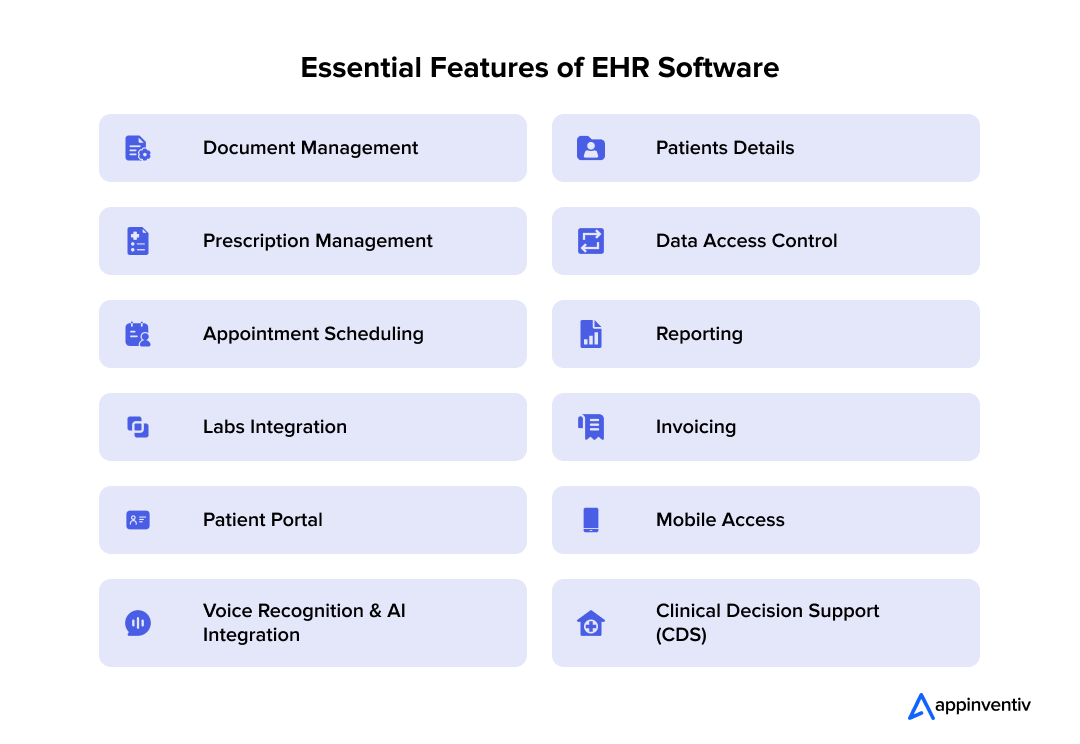
1. Document Management
The primary agenda of EHR application development is to better patient care by offering an easy-to-manage documentation tool. It should be easy for patients and doctors to upload documents across multiple formats like image, textual, and DICOM (the format for MRT and CT images).
2. Patients Details
The EHR system usually contains the patients’ personal data like full name, address, diagnosis, test results, prescribed medicines list, and other key information that gives insight into the patient’s health.
3. Prescription Management
Doctors can use the e-prescribing feature to prescribe medicines to patients remotely while accessing their medical data to ensure no drug incompatibility. On the other hand, patients can keep track of the medicine’s history.
4. Data Access Control
It is necessary for an EHR system to have multiple data access control mechanisms in place. A key point that our EHR developers always keep in mind is that no two people (across different levels) should have access to the same data. For example, nurses should not have access to the same data as one with the doctors.
5. Appointment Scheduling
One of the key features that businesses must integrate during electronic health record development is appointment scheduling. Patients can schedule appointments with their doctors in real time through the electronic health record software. On the other hand, doctors get a dashboard to view the appointments and the patient’s details.
6. Reporting
Reporting plays a key role when answering how to develop EHR. For practitioners, it helps with a comprehensive overview of the patients’ demographic data, treatments done, rate of treatment success, etc. For patients, it offers a graphical representation of how their treatment is going, upcoming appointments, etc.
7. Labs Integration
The integration of EHR with test labs promises quick data exchange and faster decision-making. What makes it all the more efficient is that the test results get sent to the apps directly, making it easy for patients and doctors to access them and take timely action.
8. Invoicing
Every healthcare facility works around invoices, claims, denials, payments made towards treatments, etc. The EHR system makes the process easy by automating the invoicing journey. In addition, many of these systems nowadays come with payment features that allow patients to pay directly for the treatments.
9. Patient Portal
A self-service portal where patients can access medical records, prescriptions, and test results. It enhances engagement by enabling direct communication with healthcare providers. Patients can also receive reminders for medications and appointments.
10. Mobile Access
EHR systems should be accessible via mobile devices for real-time data access. Doctors can update charts, prescribe medications, and manage patient records remotely. Patients can schedule appointments, view test results, and receive health notifications.
11. Voice Recognition & AI Integration
AI-powered voice recognition helps doctors dictate notes and reduces manual data entry. Al in EHR analyzes patient data to identify patterns and provide predictive insights. This improves documentation, enhances decision-making, and streamlines clinical workflows.
12. Clinical Decision Support (CDS)
CDS provides real-time, evidence-based recommendations to healthcare providers. It alerts doctors about potential drug interactions, allergies, and diagnosis errors. This feature improves treatment accuracy, patient safety, and overall healthcare quality.
The Tech-Stack and Team Required for EHR Development
The success of EHR applications are based on two factors – the feature-set and the resources (technology and team) behind them. Now, while we have looked into the first element of success, let’s get down to the Tech Stack and team requirements.
Tech stack refers to the use of essential technologies, programming languages, and frameworks used by the dedicated EHR software development company. The technologies used for the development process are a few major aspects that can help you answer “how to create EHR software.” Here is a list of ideal tech used to meet functional requirements for EHR systems.
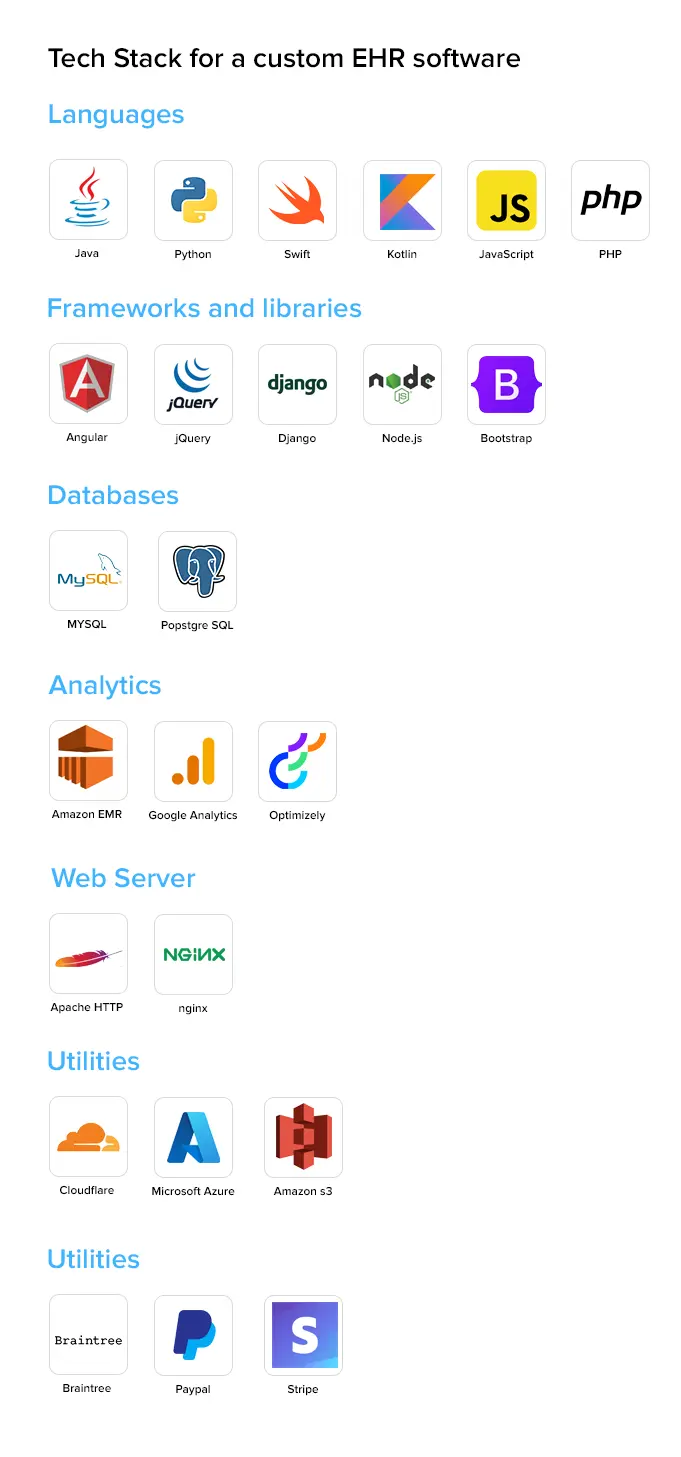
The ideal team structure that you need to invest in for building your EHR system –
- 3 web developers – 2 frontend and 1 backend
- 1 Android EHR developer
- 1 iOS EHR developer
- 2 QA experts
- 1 project manager
Now that we have looked into the multi-faceted operational side of how to build an EHR system, let us get down to the steps that contribute to custom EHR software development.
How to Create an EHR Software – A Step-by-Step Process
Electronic health record development is a complex process involving multiple stages to ensure functionality and compliance. The development stages that you can expect your EHR software development company to follow for the creation of an electronic health record system include:

Validation of Idea
Before starting with the creation of a custom EHR solution, the software agency will look into its feasibility and market fit. What they will do is sit down with you to understand your vision, your requirements, and look into your competitors while establishing what features would set you apart.
Upon a market and technical check of your app idea, the agency will go ahead with the designing stage.
EHR Prototype
At Appinventiv, once we have validated the EHR software idea, we go on to make a prototype.
As a leading custom EHR software development company, we start the process starts with creating a list of features, finalizing the technology stack, and finalizing the team who would work on it.
Next, we create a prototype which is a close resemblance of what we plan the software to look and operate like.
Intuitive UI/UX Design
Once the prototype is approved, the final design process begins. Wireframes and user journey maps are created to define the look and feel of the EHR system. A strong emphasis is placed on UX/UI to ensure seamless navigation for healthcare providers and patients.
Robust Software Development
With the designs in place, the development team starts coding the EHR system. This involves implementing core functionalities, integrating advanced technologies such as AI, IoT, or Blockchain, and embedding security features. Each development sprint undergoes regular review cycles to align with client expectations and regulatory requirements.
Rigorous Testing
After development, the EHR software undergoes rigorous testing across multiple platforms and networks. Security measures are validated to ensure the system is hack-proof and compliant with healthcare regulations. Functional and performance testing help detect potential bugs, providing a smooth user experience before launch.
Launch and Maintenance
Once we have built and tested the EHR system, we go ahead with the launch of the software – either by adding it to the existing system or by launching a new software altogether. Here, the deployment experts play a huge role in ensuring the seamless launch process.
Lastly, we maintain the EHR software, focusing on continued support and glitch-free working.
Now, while these stages seem straightforward, there are some crucial things to consider when creating an EHR system.
Key Considerations for Custom EHR Software Development
While the stages of creating an EHR system are very direct, the process can get complex because of the many elements it comes packed with. Let us look into some of those considerations.

Getting the EHR Compliance and Certifications Ready
There are several compliances that an EHR has to be engineered for – HIPAA, GDPR, CCD, HL7, etc., in addition to certifications like ONC-ATCB and EuroRec. An absence of these regulations and certifications can result in not just hefty charges but also the opening up of the EHR system for security hacks. Partnering with a skilled EHR software development company can help you ensure robust compliance and security measures.
Also Read: A Complete Guide to Healthcare Compliances
Work on the Mobile Version of the EHR
While the web version of the software is a must-have, when you launch a mobile EHR, you make it easy for patients and doctors to connect on the go. The mobile EHR also helps keep the patients more involved in their treatment journey.
Data Migration
When you move your present EHR system to a new one, it becomes important to migrate all the key information into the new software. When migrating data into existing systems, it is important to follow a milestone approach where you transfer data phase-wise, ensuring that there is complete seamlessness.
Track the EHR System Performance
The continued success of an EHR system lies in tracking its performance. At Appinventiv, we measure the usability of the system against points like –
- Ease of physicians when using the EHR
- ROI calculations
- Quality of care based on patients’ feedback
- Monitoring the quality of the EHR
Enhancing UX and Workflow Optimization
A well-designed EHR should have an intuitive interface, easy navigation, and minimal documentation workload for healthcare providers. Features like voice-to-text transcription and AI-powered decision support can improve usability and efficiency. Customizable dashboards help physicians access relevant data quickly. Reducing administrative tasks prevents burnout and enhances patient care.
Implementing Robust Security Measures
Protecting sensitive healthcare data requires multi-layered security, including end-to-end encryption, multi-factor authentication (MFA), and regular security audits. Automated data backups and disaster recovery plans ensure data integrity. Compliance with HIPAA, GDPR, and other regulations is crucial to avoid breaches and legal penalties.
By now, you must have a good gist about how you can build an EHR system for your healthcare business. Let us get down to the one element directly impacting you as an entrepreneur or a business leader – EHR software development cost.
EHR Software Development Cost
The cost of developing an electronic health record software depends on a range of factors like – feature set, team and resources, geographical location of the agency, and the number of platforms. And while these vary from one project to another, there are some MVP level features that remain the same.
So let us break down the EHR software development cost for you based on the features, technology stack, and team size we looked into before.
| Factors | Mobile (Development Hours) | Web (Development Hours) |
|---|---|---|
| UI/UX Design | 120 | 80 |
| Document management | 45 | 100 |
| Prescription management | 55 | 55 |
| Data access control | 30 | 40 |
| Labs integration | 50 | 30 |
| Appointment scheduling | 20 | 57 |
| Patients details | 35 | 27 |
| Reporting | 30 | 20 |
| Cloud hosting | 40 | 42 |
| Backend development | 142 | 128 |
| Frontend development | 150 | 130 |
| Quality assurance | 140 | 120 |
| Total | 1,212 hours | 829 hours |
Now, if you convert these hours into the average cost of EHR system that a healthcare software development would charge – $50-$80 per hour, the range will come out to be –
Web-based EHR platform – $41,450 – $66,320
Mobile EHR platform – $60,600 – $96,960.
While the answer to how long EHR implementation takes and the average cost of EHR systems are subject to the specific MVP version, it is important to note that the advanced version will have a different/upgraded set of numbers. Here are some features of the advanced EHR version –
Auto-Scheduling: This could be one of those innovative features that sets your EHR system apart. By adding in an auto-scheduling feature, the software would be able to keep a track of the doctor’s appointment and handle the upcoming ones on an automated level.
Vendor Selection: Every healthcare unit works with multiple vendors. However, tracking and filtering them out based on location, cost, etc., can be challenging. This is where an EHR system can come in handy. By adding a vendor filtering and tracking feature to the software, clinicians can handle the activities better.
Customer Relationship Management: The success of an EHR depends heavily on how well the patients’ have adopted it. To support this intent, it is crucial to integrate a CRM with EHR – one that would have a chat option, view report, raise complaint feature, newsletters, push-notifications, etc.
Also Read: Healthcare CRM Software Development
Next-Gen Technology Integration: Several EHR software providers are now actively experimenting with the integration of Artificial Intelligence in EHR systems to make them more intelligent, efficient, and patient-centric. However, this AI integration often comes with added costs and extended development timelines, requiring careful planning and expert execution.
These are only a few examples of the factors or additions that can take your EHR system from its MVP version to an advanced one. The cost implications of these can look like this –
MVP level EHR cost range – $41k to $97k
Advanced level EHR cost range – $50k to $120k.
Find out what it takes to build a high-performing EHR system.
Common Roadblocks in EHR Software Development and Their Solutions
Building an EHR system has several challenges that can impact its successful implementation. Here are some key obstacles and their solutions to ensure compliance, security, and interoperability in EHR development.

Regulatory Compliance
Challenge: Ensuring the EHR system meets stringent healthcare regulations like HIPAA, GDPR, certification, and HL7 can be complex and time-consuming. Non-compliance can lead to legal penalties, loss of trust, and security vulnerabilities.
Solution: Build the EHR system with compliance-ready features, including detailed audit logs, access controls, and automated updates to align with evolving regulations. Regular security and compliance audits help maintain adherence.
Interoperability
Challenge: Ensuring seamless data exchange between EHR and healthcare legacy systems can be difficult. Lack of interoperability can result in fragmented patient records, miscommunication, and inefficiencies in care delivery.
Solution: Develop the EHR software using industry-standard protocols and APIs to facilitate seamless data exchange. Focus on building a flexible architecture that can easily integrate with other systems and scale with future enhancements.
Data Security
Challenge: Protecting patient health information from cyber threats, breaches, and unauthorized access is critical. A single security lapse can lead to data leaks, financial losses, and reputational damage for healthcare providers.
Solution: Implement advanced encryption protocols, adaptive multi-factor authentication, and granular role-based access controls to safeguard patient data. Continuous threat monitoring, periodic security audits, and proactive vulnerability patching further strengthen system security.
User Adoption and Training
Challenge: Implementing a new EHR system can face resistance from healthcare providers due to complex interfaces, workflow interruptions, and time-intensive documentation. Poor usability may hinder efficiency and cause frustration among medical staff.
Solution: Focus on a user-friendly design with intuitive navigation, voice-to-text documentation, and AI-driven automation to streamline workflows. To ensure seamless adoption, offer comprehensive training programs, guided onboarding, and round-the-clock technical support.
How can Appinventiv Help With Your EHR Project?
At Appinventiv, we have helped conceptualize and engineer over 30+ EHRs – both hospital and patient facing. Our team of developers knows the healthcare compliances needed to make an efficient EHR system that abides by all the regulations. Moreover, what makes us a reliable name in the healthcare software space is that we have gathered a deep insight into creating future-forward EHR software with the right set of technologies.
We have the right blend of skills and technology understanding to help you build and implement an efficient EHR in your healthcare system – all with the guarantee of high security, scalability, and interoperability.
As an esteemed healthcare software development company, we have worked on several transformative healthcare projects like Health-e-People, DiabeticU, Soniphi, and many others, helping them streamline patient care, enhance data accessibility, and ensure regulatory compliance. Our expertise spans integrating AI-driven analytics, IoT-enabled health monitoring, and blockchain for secure data management, making our EHR integration services and development process future-ready.
What you have to do is get in touch with our team of healthcare experts and initiate your EHR software development journey now.
FAQs
Q. How to build an EHR system?
A. Here are the essential steps on how to create an electronic medical record system effectively:
- Validate Idea & Define Requirements: Identify target users, analyze market needs, and ensure compliance with regulations like HIPAA and GDPR.
- Design the EHR System: Create user-friendly UI/UX, plan scalable data architecture, and develop a prototype for feedback.
- Develop Core Features: Implement patient records management, e-prescriptions, clinical decision support, and interoperability with HL7/FHIR.
- Test for Performance & Reliability: Conduct functional, usability, and load testing while gathering feedback from healthcare professionals.
- Deploy & Integrate Systems: Integrate with lab systems, billing software, and telehealth platforms while ensuring smooth adoption.
- Maintain & Update: Regularly update for regulatory compliance, enhance with AI-driven analytics, and provide continuous support.
Q. How much does EHR software development cost?
A. Well, there cannot be one fixed answer to it. Depending on the feature sets and technology stack, number of platforms, ehr software development cost can range anywhere between $40k to $100k.
Q. What are the things that I should keep into consideration when building an EHR?
A. There are elements that affect the continuity and success of an EHR system. Elements like – its compliance readiness, availability of mobile version, proper data migration, etc. To get a thorough understanding of these elements, please get in touch with our healthcare developers.
Q. How long does it take to implement an EHR system?
A. The time needed to implement an EHR system depends on factors like facility size, system complexity, and customization needs. Generally, the process takes 6 months to 2 years.
Here’s a detailed breakdown of the timeline to implement an EHR for different healthcare organization size:
- Small Clinics & Practices: 6–12 months for ready-to-use solutions.
- Mid-Sized Hospitals: 12–18 months, including staff training and customization.
- Large Healthcare Systems: 18–24 months due to integration challenges, compliance requirements, and extensive training.
Q. What are some of the top examples of EHR software?
A. Here are some of the top EHR systems examples:
- Hospital-based EHRs
- Ambulatory EHRs
- Cloud-based EHRs
- Open-source EHRs
- Specialty-specific EHRs
- Government and VA EHRs
Q. How is AI transforming enterprise EHR systems in 2025 and beyond?
A. AI is transforming enterprise EHR systems in multiple ways, such as:
- Improved Accuracy: AI automates data entry, reducing errors and improving record accuracy.
- Predictive Analytics: AI analyzes patient data to predict outcomes and recommend care.
- Clinical Decision Support: AI provides real-time treatment recommendations and alerts.
- Enhanced Interoperability: AI improves data sharing between healthcare systems.
- Automated Documentation: AI helps in real-time coding and documentation for better billing.
- Personalized Care: AI tailors patient care plans based on historical and current data.
Q. How can generative AI enhance clinical documentation within EHRs?
A. Here are some of the most remarkable ways generative AI enhances clinical documentation within EHR systems.
Automated Note Generation: Generative AI transcribes and summarizes patient encounters in real-time.
- Content Suggestions: AI recommends relevant documentation content, such as diagnosis and treatment.
- Contextual Understanding: AI suggests tailored documentation based on patient history.
- Reduced Burden: AI auto-completes repetitive parts of documentation.
- Consistency & Compliance: Ensures accurate and consistent documentation for regulatory compliance.
- Natural Language Processing (NLP): AI generates conversational, accurate documentation.


- In just 2 mins you will get a response
- Your idea is 100% protected by our Non Disclosure Agreement.
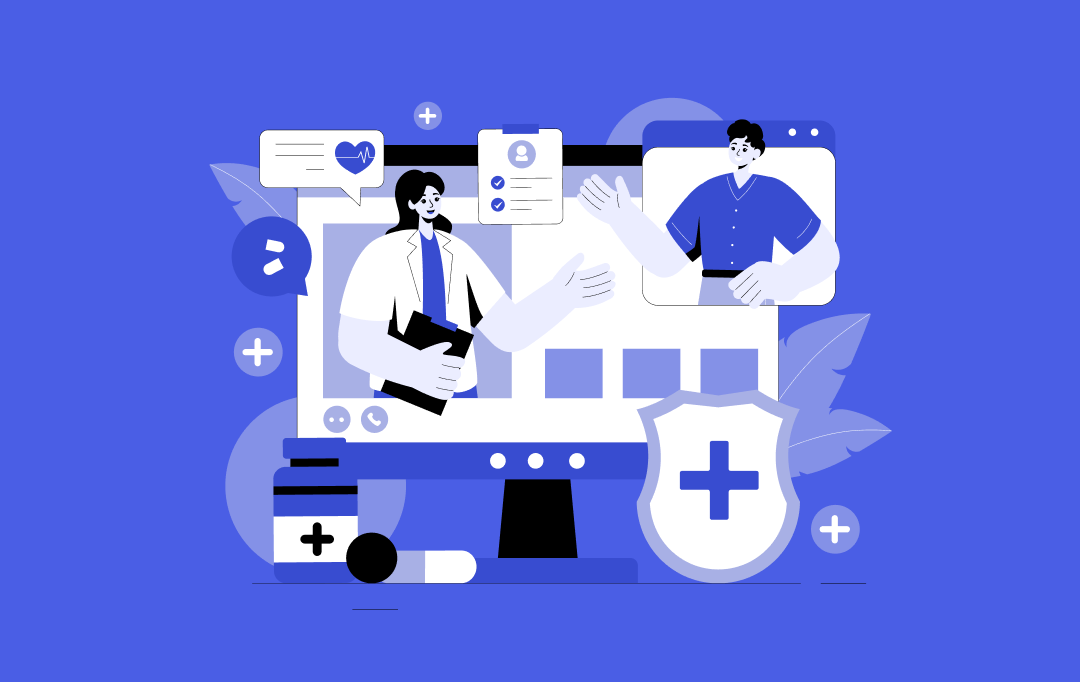
Identity and Access Management in Healthcare: Core Components, Challenges, and Best Practices
Key Takeaways Healthcare runs on trust, and Identity and Access Management is what keeps that trust intact by protecting every login, record, and device. A modern IAM system does more than secure passwords, it connects people, systems, and data safely across hospitals and clinics. AI and automation are changing how IAM works, spotting risks faster…

How Telemedicine is Breaking Barriers in Mental Health Care Access and Delivery
Key Takeaways Telemedicine is helping healthcare systems close gaps caused by clinician shortages, long wait times, and limited physical infrastructure. Virtual mental health care boosts access beyond geographical barriers while reducing no-shows, travel barriers, and scheduling conflicts. Hybrid models, remote monitoring, and AI-supported assessments make care more continuous, proactive, and scalable. Partner with Appinventiv to…
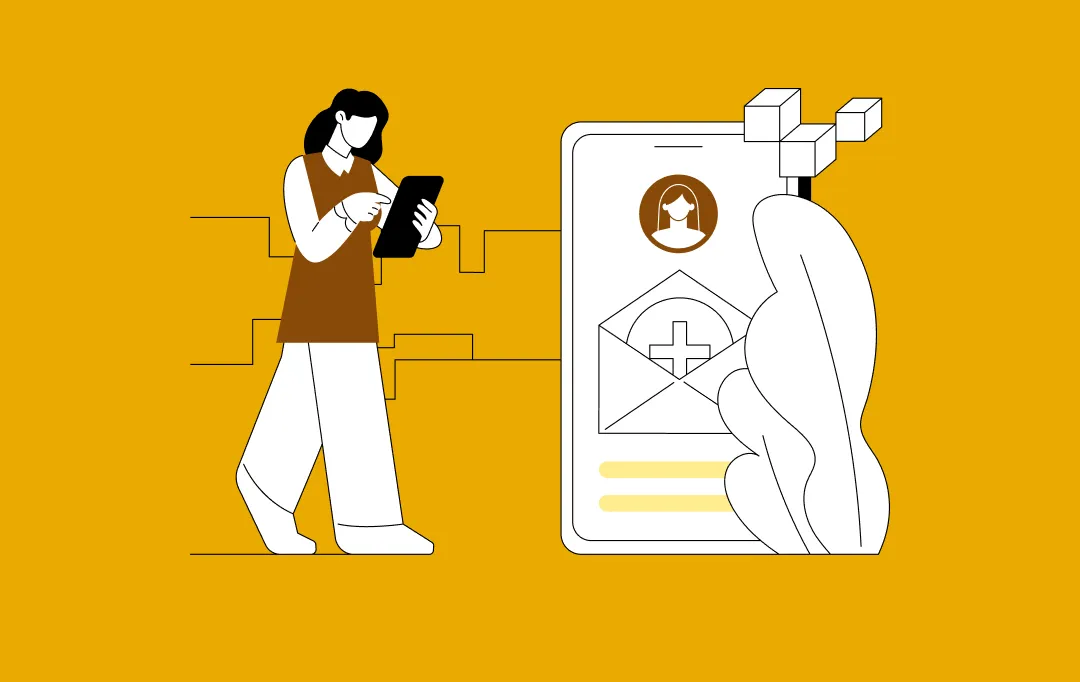
Chiropractor App Development: Complete Guide for Clinics
Key Takeaways Chiropractor apps succeed when they solve real clinic workflows, not just scheduling and bookings. Choosing the right app type early prevents data silos, rework, and scalability issues later. MVP-first development helps clinics validate adoption before investing in full platforms. Compliance, integrations, and analytics must be built in from day one, not added later.…


